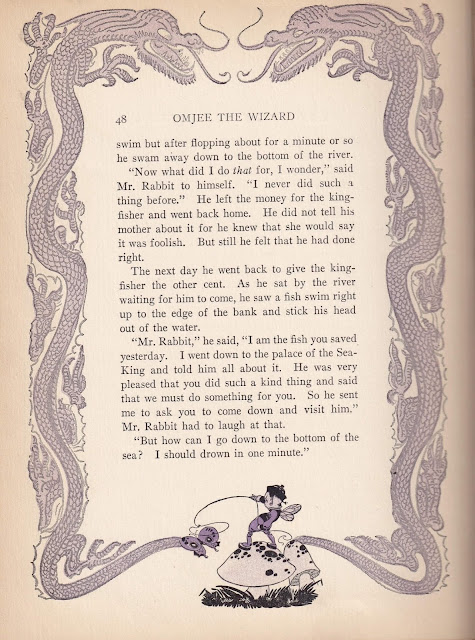Today's story is a perfect example of a technique for story creation. Last week's story from Omjee the Wizard
was able to stand as a complete story, but it left the poor Sea King's daughter dying. When a story ends with an issues unresolved -- yes, even the old "and they lived happily ever after" -- it's a perfect opportunity to create a whole new story.Last week I tossed around the idea of which came first the Korean tale or the better known Swahili or the Panchatantra versions commonly called something like "The Heart of a Monkey"? The question remains, but last week's tale is certainly well-known. Today it's told as a P'ansori, a Korean musical form with a drum accompanying the teller. Britanica calls it folk opera and, since some can last 3 hours, I'd say Pansori is indeed operatic, but last week's story is one of five in its repertoire still told. It's known as Sugungga and is lighter than all the others for its personification of animals, unlike the rest of the five.
 |
| Pansori performance at the Busan Cultural Center in Busan South Korea |
Nowadays as "Sugungga" those variants are very similar to the other variants omitting the king's daughter, having the king seek a body part of a rabbit, who tricks him. Recently Daniel San Souci created his own version, The Rabbit and the Dragon King, obviously influenced by the humor of the Pansori and attributing it to being "recorded as early as A.D. 642 during Korea's Shila Dynasty." His version has the rabbit give the hypochondriacal king a persimmon. The king is cured by what he believes is the rabbit's heart.
After today's story there's an interesting botanical follow-up to today's story. I don't know if Homer Hulbert heard this story as a Pansori, but, lacking a drum, let us look at "the rest of the story." Again we have several of the same characters as last week, but a totally different rabbit and also borrow an element of yet another common tale type best known in the Grimm story of "The Fisherman and His Wife."
Hulbert, in his Preface says his book's stories "have been taken directly from the folk-lore of Korea." His work with that literature was fairly extensive for a non-Korean in the late 19th century after roughly 20 years living there. It makes me think some teller in the distant past had a request for that "rest of the story." He does admit to combining "the flavor of the Korean story" while toning it down for children "without emasculating the essential meaning."
That change may be debated as harming the authentic folklore. Certainly Hulbert created a frame story beyond the actual tales, such as his storyteller, the blind wizard, Omjee. Stories not only travel, as mentioned last week, but they also change. Storytellers don't always repeat a story perfectly, due to faulty memories or the need for story creation.
Music and poetry have helped memorization over the centuries. Korean medicine actually used the Pansori of "Sugungga" with a character known as Yaksungga reciting a rhyming song of Korean medicinal herbs and their properties as a mnemonic device. It's said this helped people learn medical knowledge of the time.
In a further case of life imitating art, Scientists combine house plant with rabbit DNA, forming what its creator calls a "green liver" to remove cancer-causing indoor air pollution toxins. Somewhere the creator of today's story is probably smiling.
************
- There are many online resources for Public Domain stories, maybe none for folklore is as ambitious as fellow storyteller, Yoel Perez's database, Yashpeh, the International Folktales Collection. I have long recommended it and continue to do so. He has loaded Stith Thompson's Motif Index into his server as a database so you can search the whole 6 volumes for whatever word or expression you like by pressing one key. http://folkmasa.org/motiv/motif.htm
- You may have noticed I'm no
longer certain Dr. Perez has the largest database, although his
offering the Motif Index certainly qualifies for those of us seeking
specific types of stories. There's another site, FairyTalez
claiming to be the largest, with "over 2000 fairy tales,
folktales, and fables" and they are "fully optimized for
phones, tablets, and PCs", free and presented without ads.
Between those two sites, there is much for story-lovers, but as they say in infomercials, "Wait, there's more!"
- Zalka Csenge Virag - http://multicoloreddiary.blogspot.com doesn't give the actual stories, but her recommendations, working her way through each country on a continent, give excellent ideas for finding new books and stories to love and tell.
You're going to find many of the links on these sites have gone down, BUT go to the Internet Archive Wayback Machine to find some of these old links. Tim's site, for example, is so huge probably updating it would be a full-time job. In the case of Story-Lovers, it's great that Jackie Baldwin set it up to stay online as long as it did after she could no longer maintain it. Possibly searches maintained it. Unfortunately Storytell list member, Papa Joe is on both Tim Sheppard's site and Story-Lovers, but he no longer maintains his old Papa Joe's Traveling Storytelling Show website and his Library (something you want to see!) is now only on the Wayback Machine. It took some patience working back through claims of snapshots but finally in December of 2006 it appears!













No comments:
Post a Comment